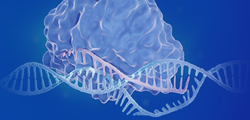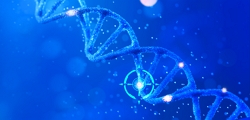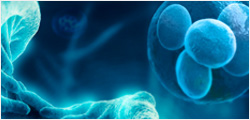-
REAGENT SERVICES
Hot!
-
Most Popular Services
-
Molecular Biology
-
Recombinant Antibody/Protein
-
Reagent Antibody
-
CRISPR Gene Editing
-
DNA Mutant Library
-
IVT RNA and LNP Formulations
-
Oligo Synthesis
-
Peptides
-
Cell Engineering
-
- CRISPR/Cas9 sgRNA
- CRISPR/Cas12a crRNA
- Prime Editing Guide RNA
- Base Editing Guide RNA
- HDR Templates
- gRNA + HDR Template Design Tools
- cGMP Guide RNA
- cGMP HDR Templates
- CRISPR/Cas Proteins
- CAR-T Knock-in Optimization Kit
- CRISPR Plasmids
- CRISPR gRNA Plasmid Libraries
- CRISPR Cell Lines
- Microbial Genome Editing
-
-
PRODUCTS
-
Most Popular Reagents
-
 Instruments
Instruments
-
Antibodies
-
ELISA Kits
-
Protein Electrophoresis and Blotting
-
Protein and Antibody Purification
-
Recombinant Proteins
-
Molecular Biology
-
Stable Cell Lines
-
Cell Isolation and Activation
-
 IVD Raw Materials
IVD Raw Materials
-
 Therapy Applications
Therapy Applications
-
Resources
-
- Pharmacokinetics and Immunogenecity ELISA Kits
- Viral Titration QC ELISA Kits
- -- Lentivirus Titer p24 ELISA KitHot!
- -- MuLV Titer p30 ELISA KitNew!
- -- AAV2 and AAVX Titer Capsid ELISA Kits
- Impurity Test ELISA Kits
- -- BSA ELISA Kit, 2G
- -- Cas9 ELISA KitNew!
- -- Protein A ELISA KitNew!
- -- His tagged protein detection & purification
- -- dsRNA ELISA Kit
- -- Endonuclease ELISA Kit
- COVID-19 Detection cPass™ Technology Kits
-
- Automated Maxi-Plasmid PurificationHot!
- Automated Mini-Plasmid PurificationNew!
- PCR Reagents
- S.marcescens Nuclease Benz-Neburase™
- DNA Assembly GenBuilder™
- Cas9 / Cas12a / Cas13a Nucleases
- Base and Prime Editing Nucleases
- GMP Cas9 Nucleases
- CRISPR sgRNA Synthesis
- HDR Knock-in Template
- CRISPR Gene Editing Kits and Antibodies
-
![AmMag™ Quatro Automated Plasmid Purification]() AmMag™ Quatro automated plasmid purification
AmMag™ Quatro automated plasmid purification
-
![Anti-Camelid VHH]() MonoRab™ Anti-VHH Antibodies
MonoRab™ Anti-VHH Antibodies
-
![ELISA Kits]() ELISA Kits
ELISA Kits
-
![Precast Gels]() SurePAGE™ Precast Gels
SurePAGE™ Precast Gels
-
![Quatro ProAb Automated Protein and Antibody Purification System]() AmMag™ Quatro ProAb Automated Protein and Antibody Purification System
AmMag™ Quatro ProAb Automated Protein and Antibody Purification System
-
![Target Proteins]() Target Proteins
Target Proteins
-
![AmMag™ Quatro Automated Plasmid Purification]() AmMag™ Quatro automated plasmid purification
AmMag™ Quatro automated plasmid purification
-
![Stable Cell Lines]() Stable Cell Lines
Stable Cell Lines
-
![Cell Isolation and Activation]() Cell Isolation and Activation
Cell Isolation and Activation
-
 IVD Raw Materials
IVD Raw Materials
-
![Quick
Order]() Quick Order
Quick Order
-
![Quick
Order]() Quick Order
Quick Order
- APPLICATIONS
- RESOURCES
- ABOUT US
- SIGN IN My Account SIGN OUT
- REGISTER
Webinars » Molecular Classification-based identification of diagnostic and treatment targets in glioma
Molecular Classification-based identification of diagnostic and treatment targets in glioma
Adult glioma is a classic example that intensive research efforts in the areas of genomic sequencing, targeting genomic and epigenetic abnormalities have not identified subtype-specific pathways of pathogenesis and targetable vulnerabilities. A major source of this dilemma is that current classification standard, though prognostically relevant under the existing treatment options, fails to assign gliomas into biologically distinct entities. Transcriptome-based classification may integrate the effects between cell of origin and driving genomic alterations, and assign gliomas into distinct biology entities exhibiting biology-driven clinical manifestations. Thus, transcriptome-based subtyping may enable the identification of subtype-specific vulnerabilities. We hypothesize that key signaling pathways converged between neural development and gliomagenesis, and gene networks spanning these pathways might enable molecular classification of gliomas.
Key Notes
Despite detailed characterization of genomic alterations, subtype-specific vulnerabilities and treatment options in gliomas are hitherto not identified.Based on the known developmental pathways converged between brain development and glioma, we developed an EM/PM classification scheme independent of morphological subtypes and grades.While genetic makeup may change during glioma progression and/or across different tumor areas, developmentally anchored EM/PM subtypes are highly stable and contain subtype-specific vulnerabilities.
Webinar Details
- Date: Dr. Xiaolong Fan, professor at Beijing Normal University, China
- Time: 18th November 2021
- Speaker: 11:00 CET / 10:00 BST

Speaker-related Webinars

Molecular Classification-based identification of diagnostic and treatment targets in glioma
Molecular Classification-based identification of diagnostic and treatment targets in glioma.

-






































